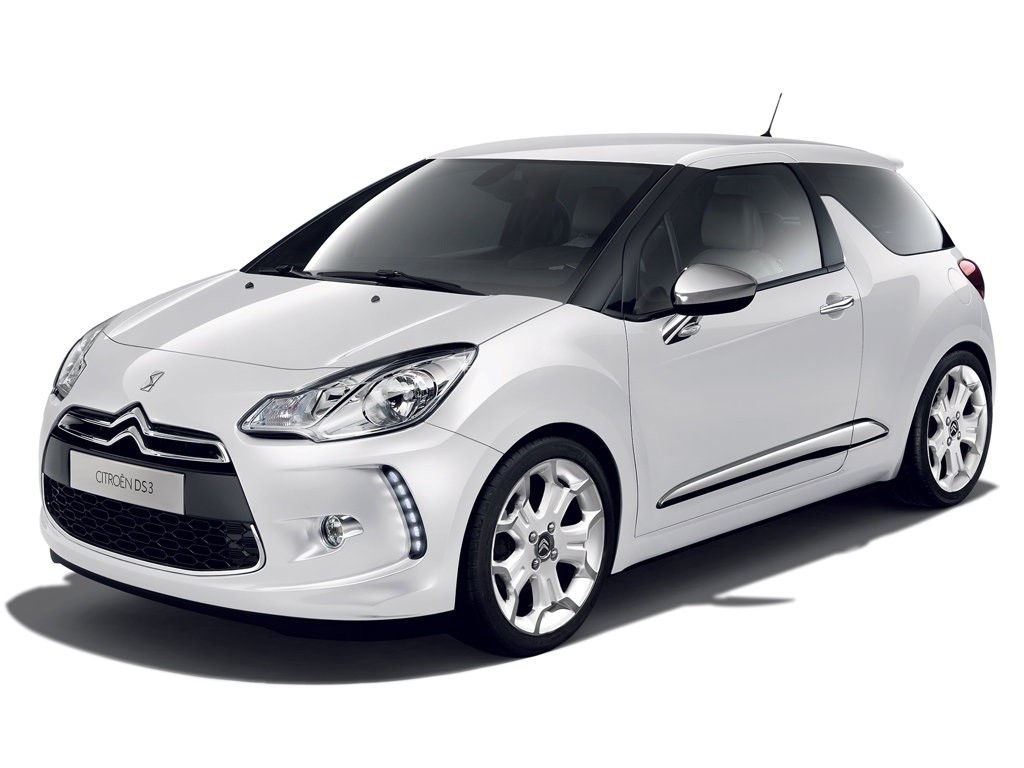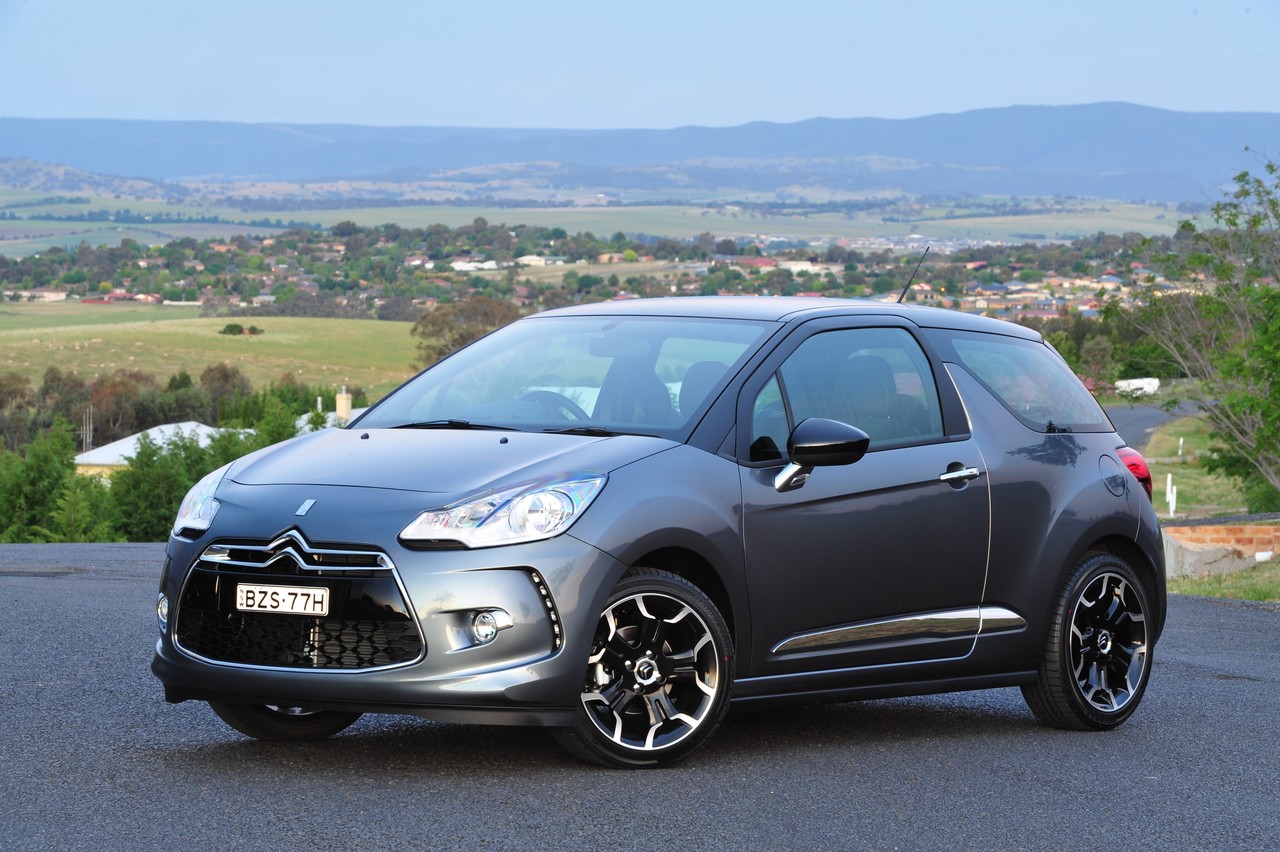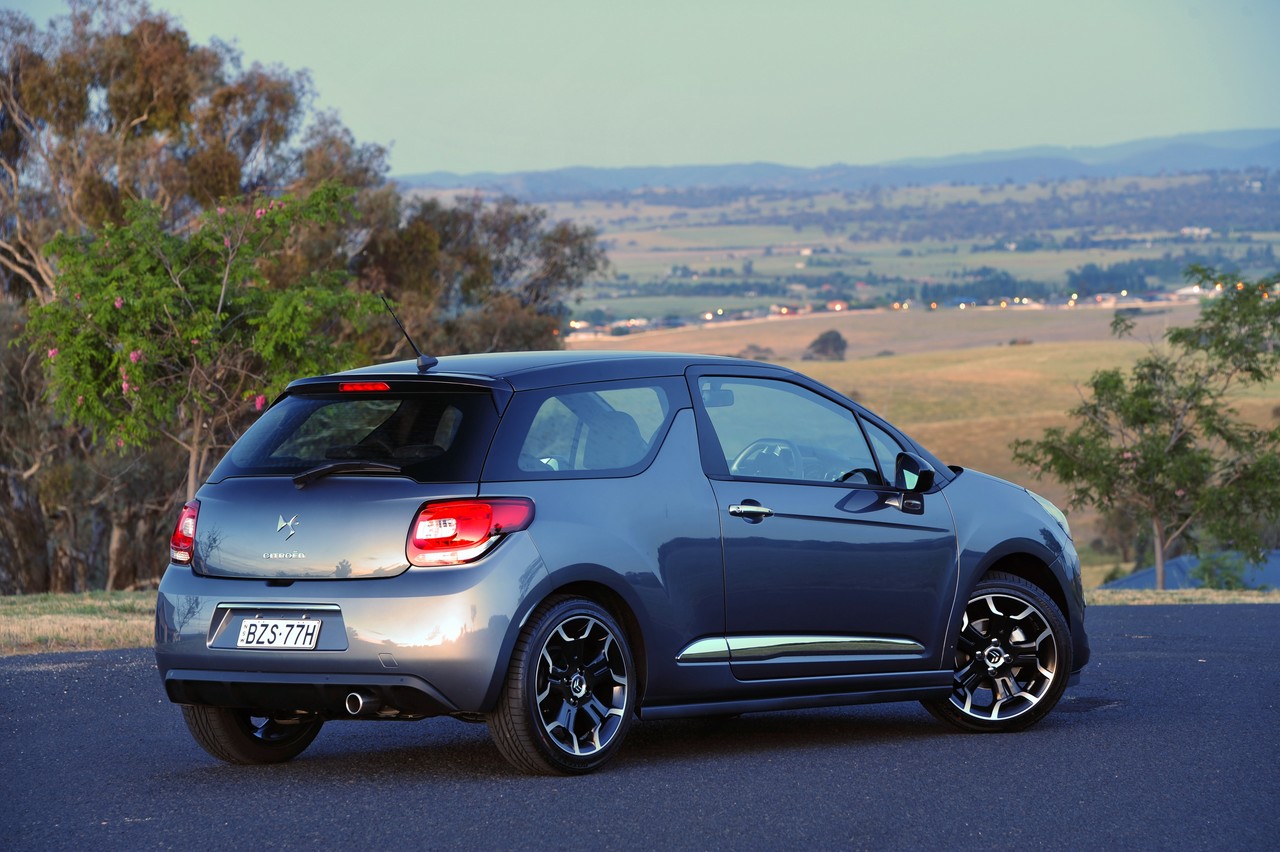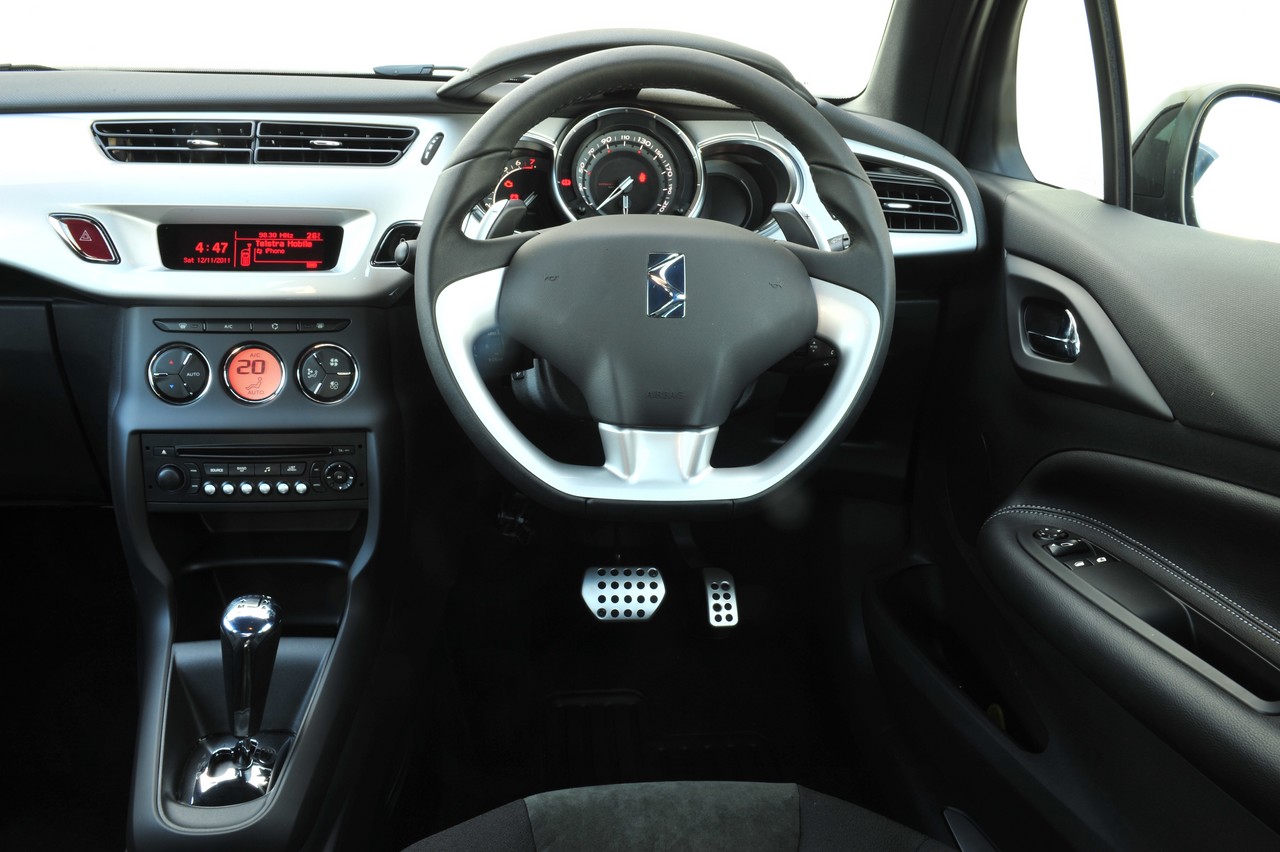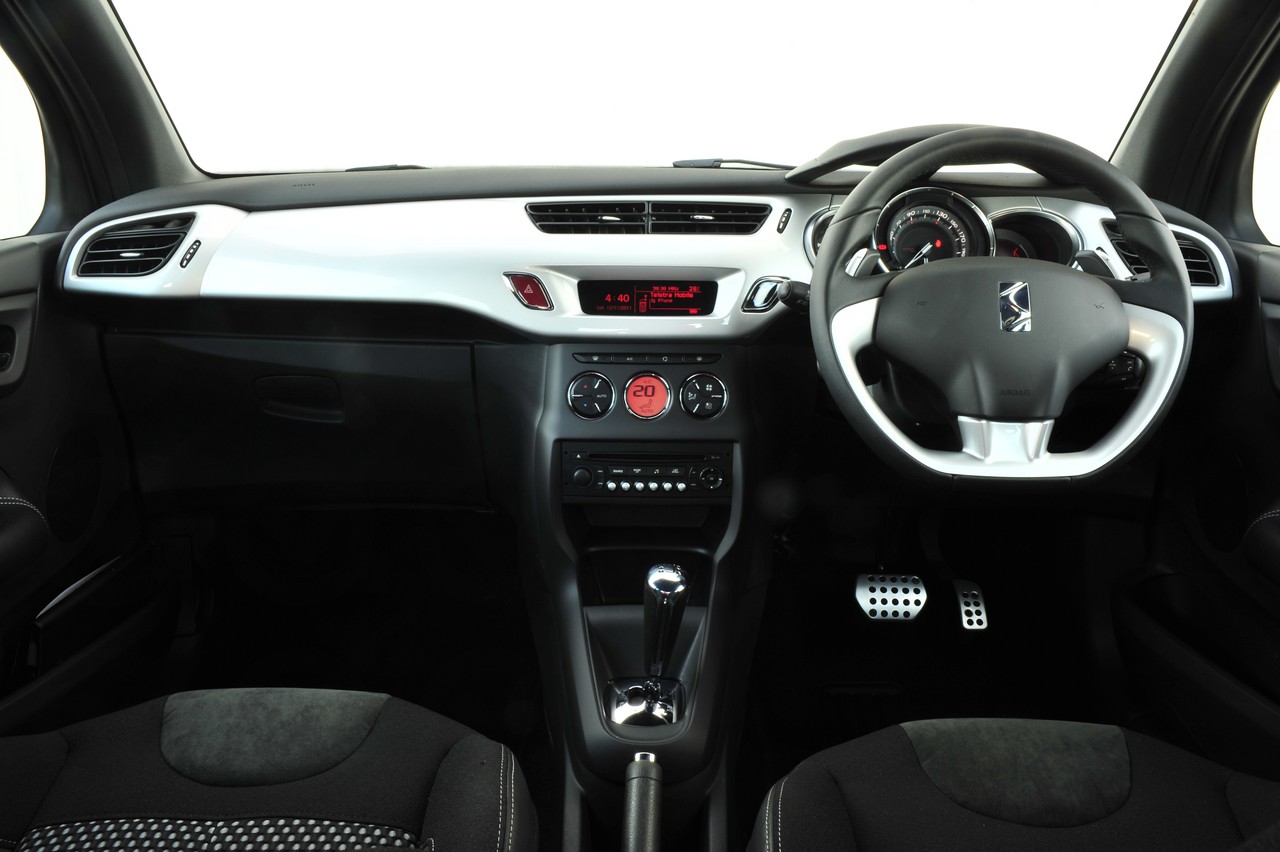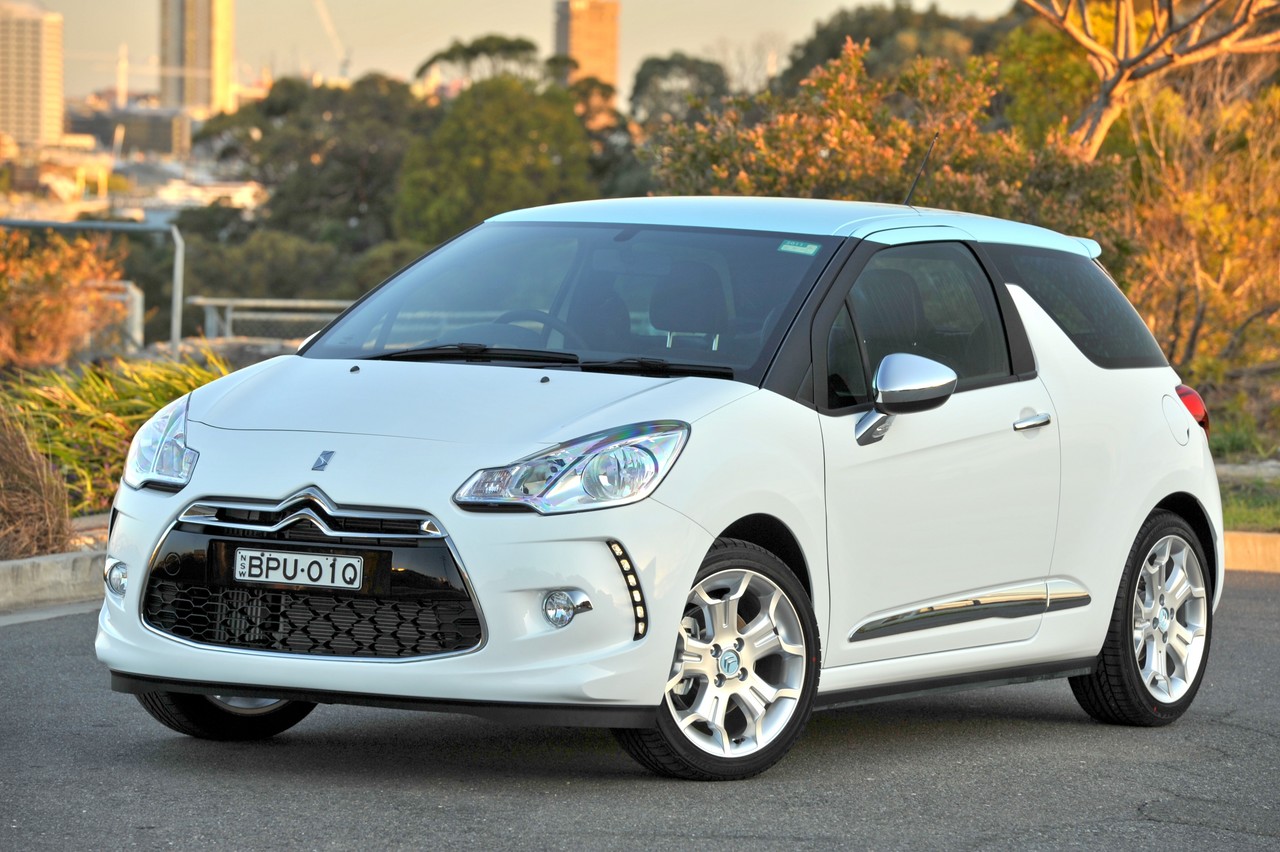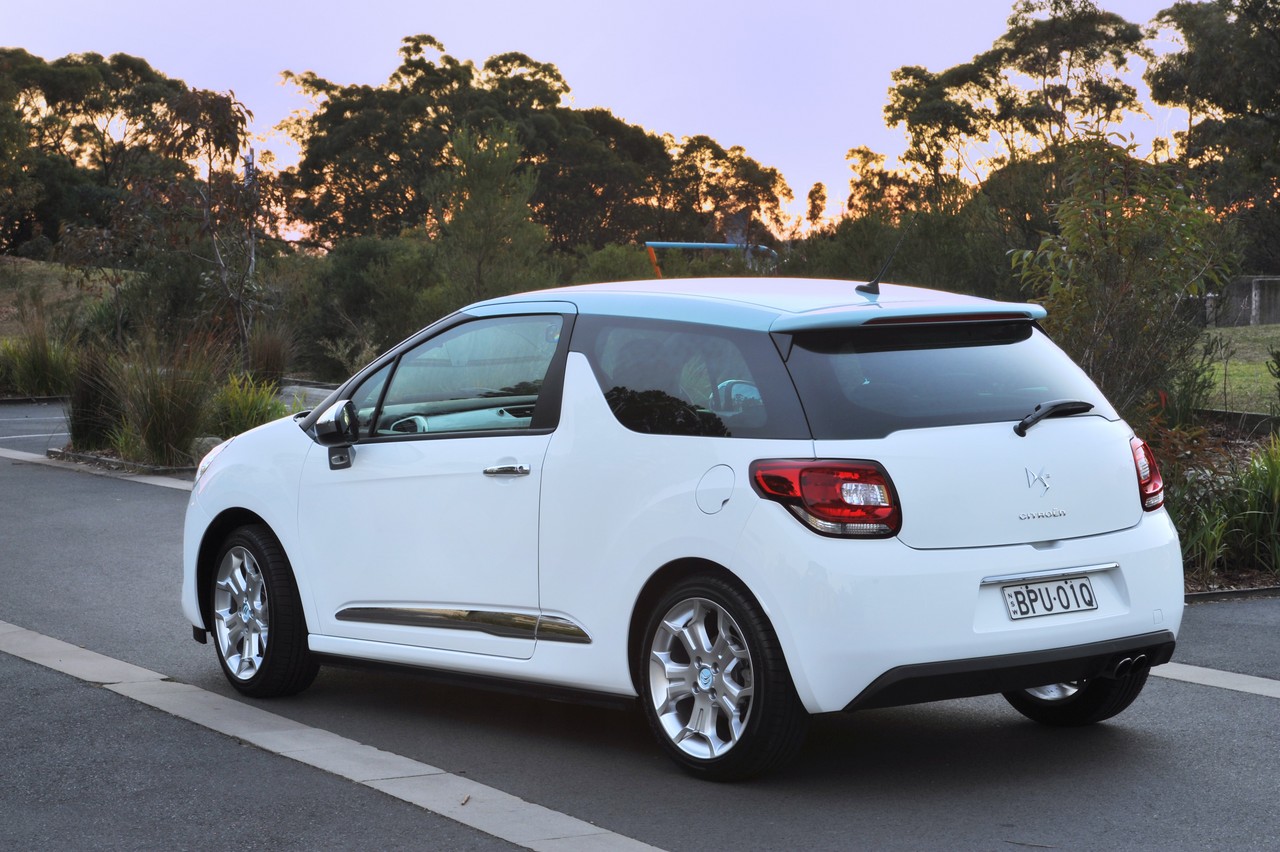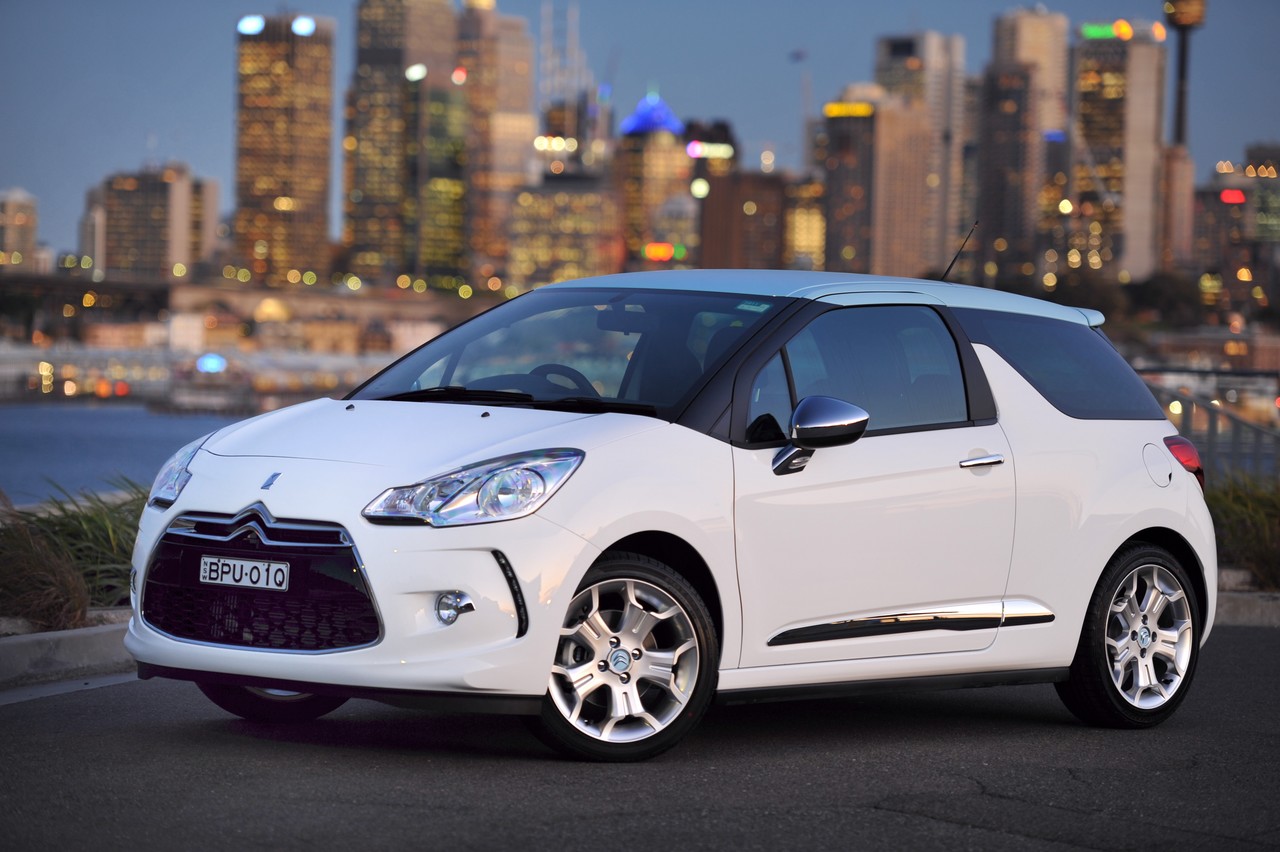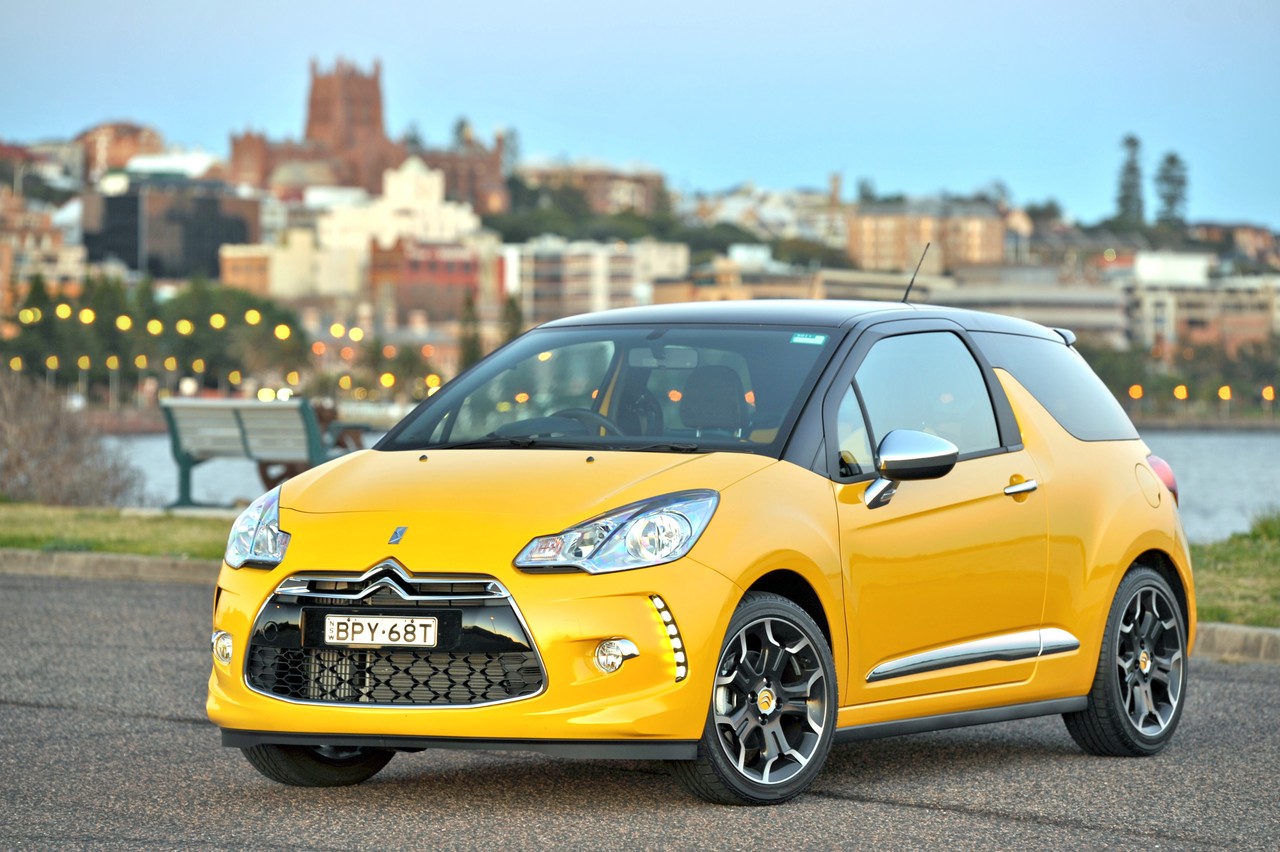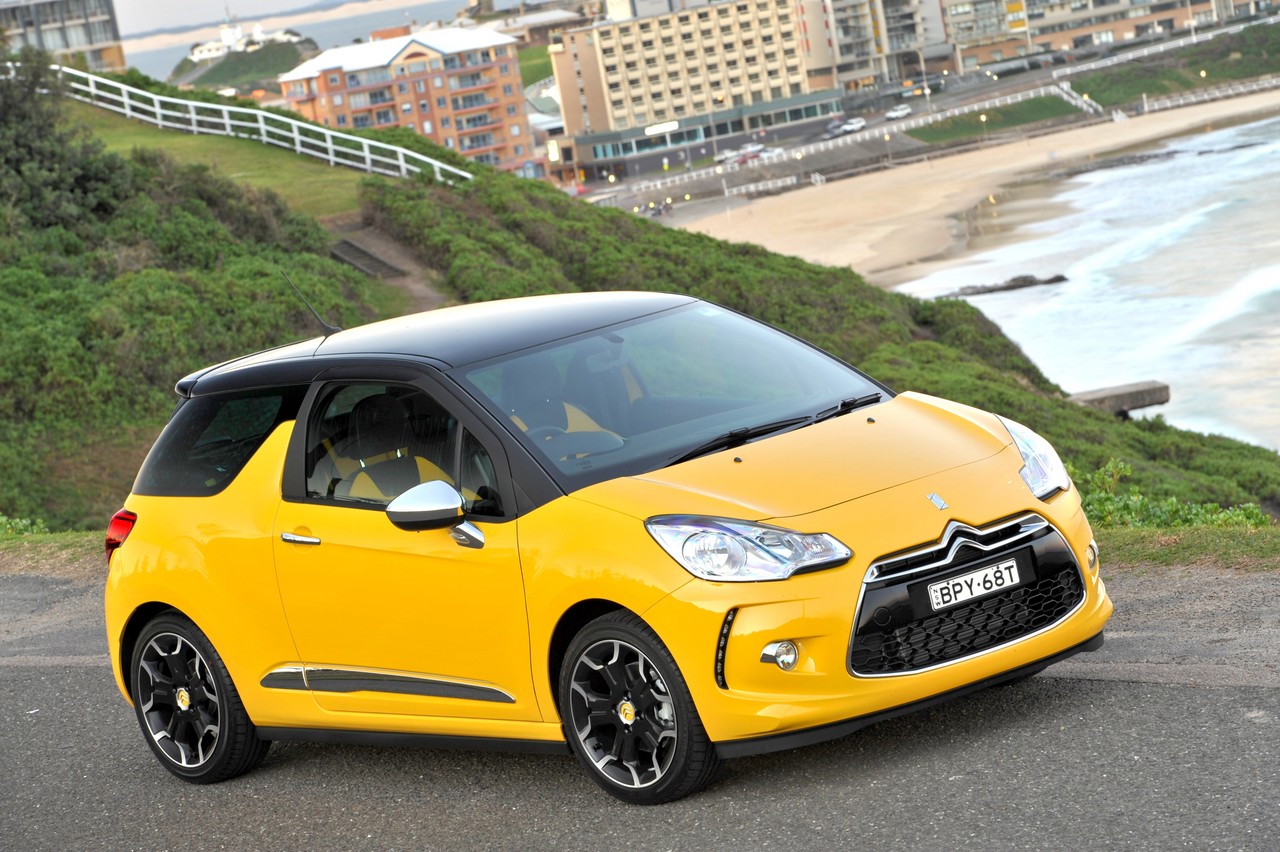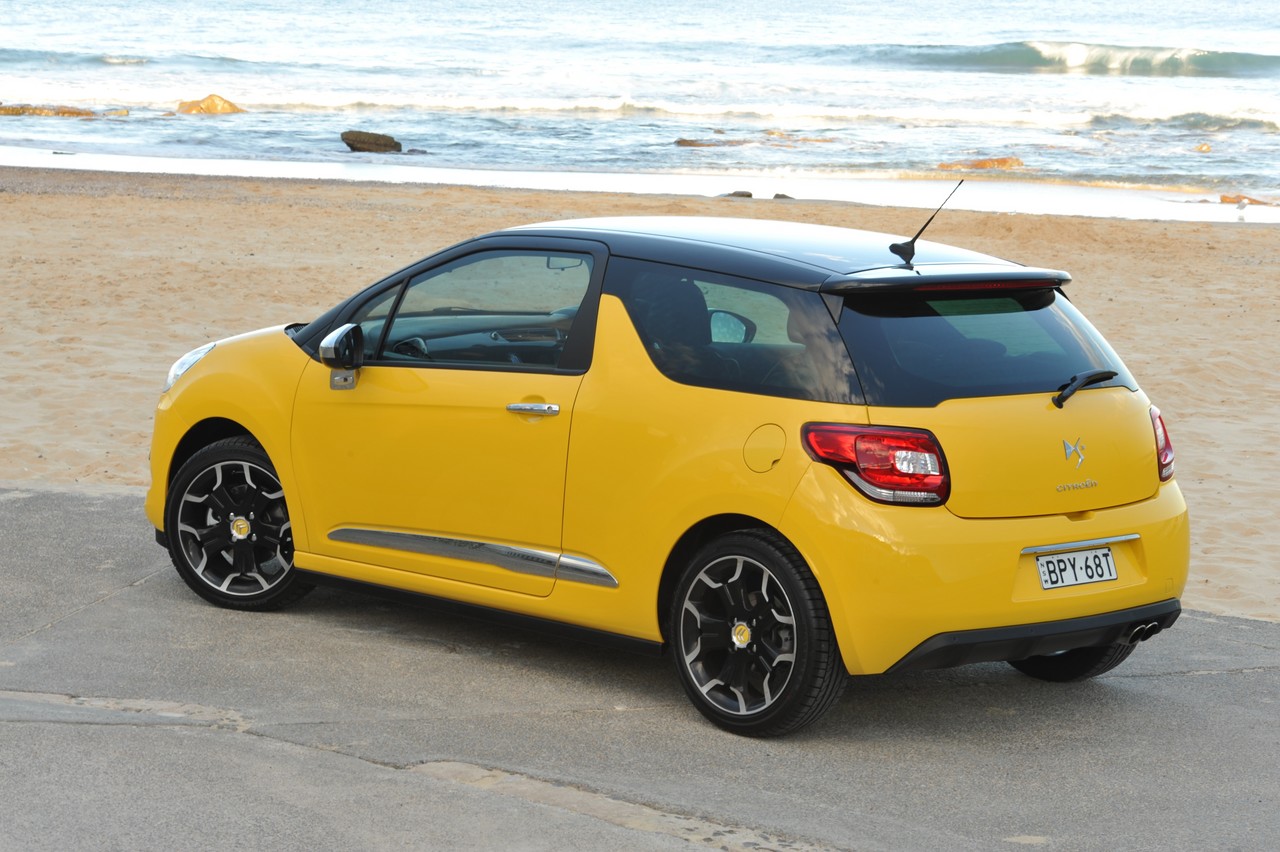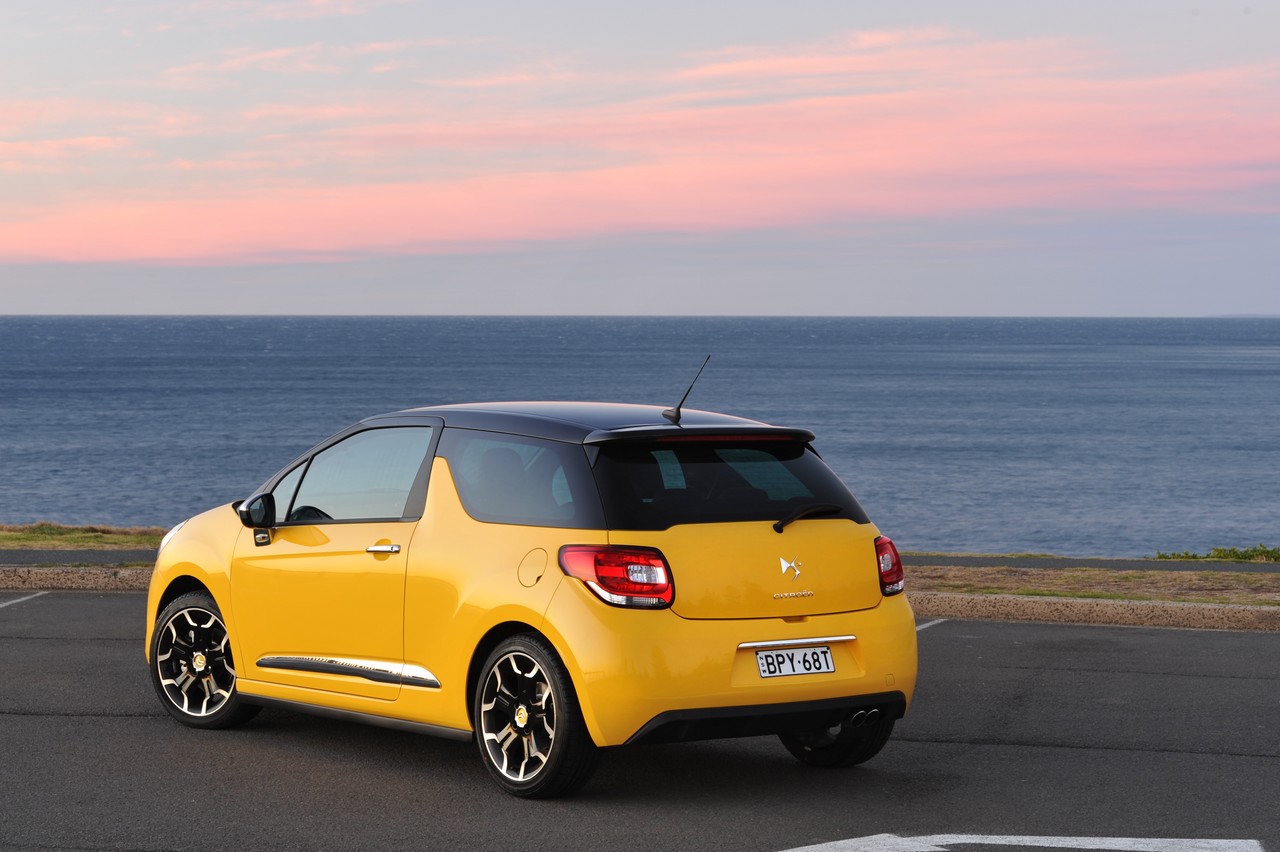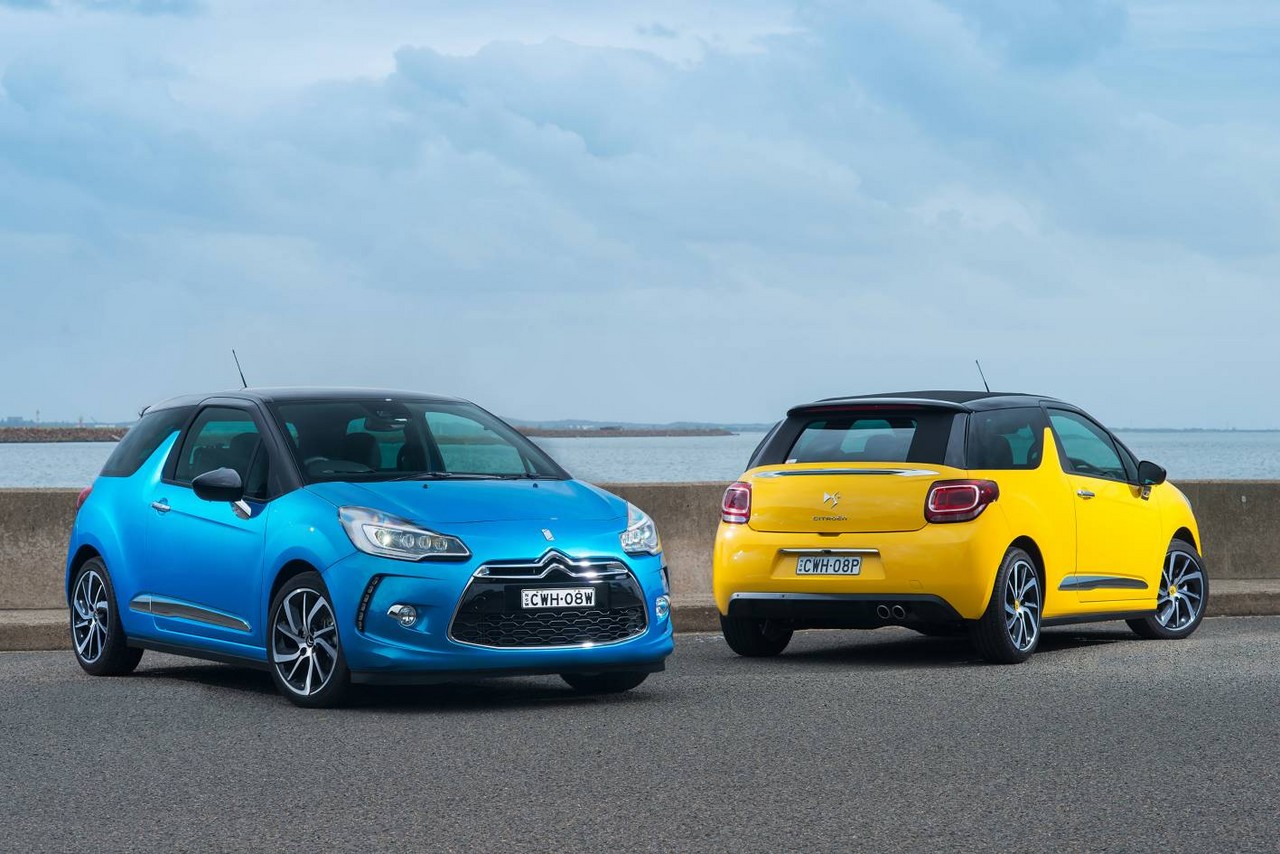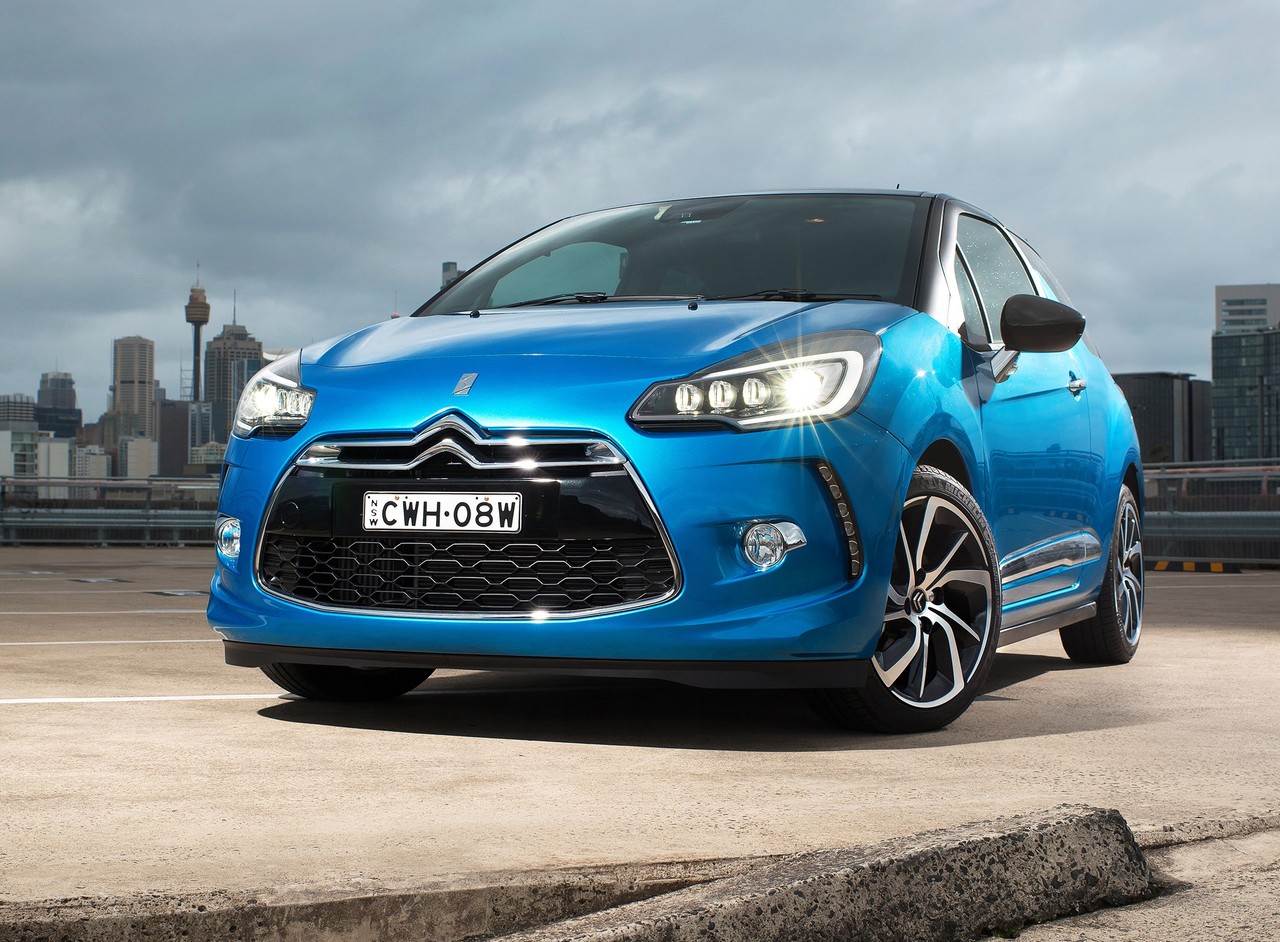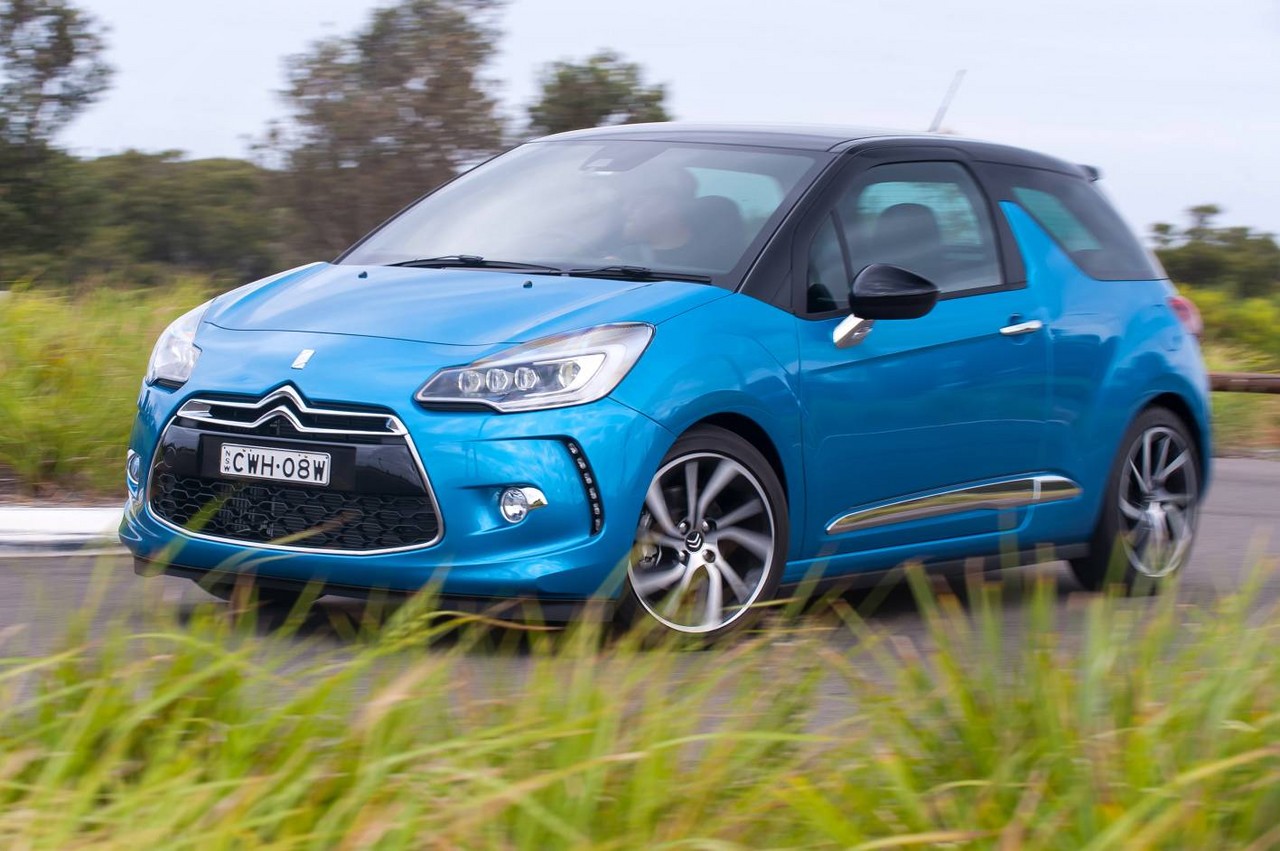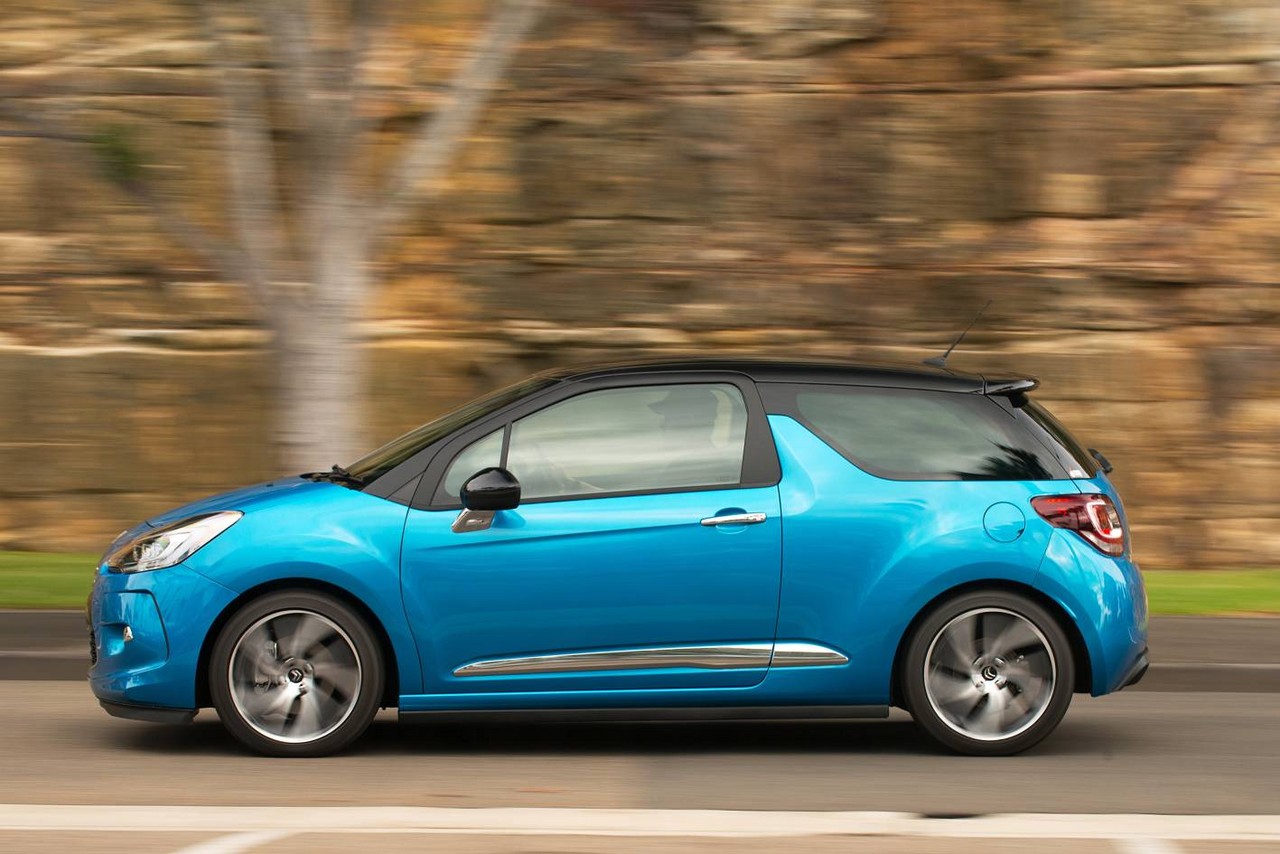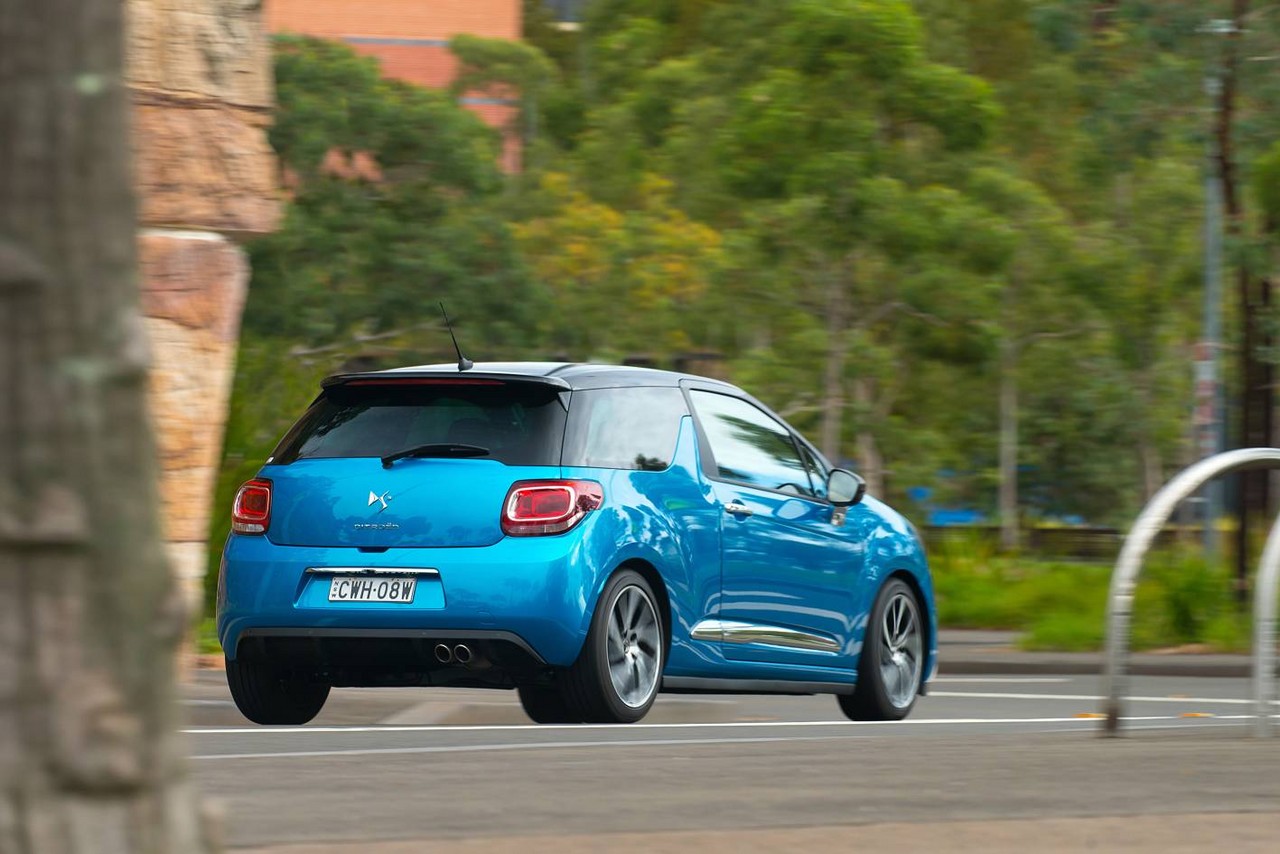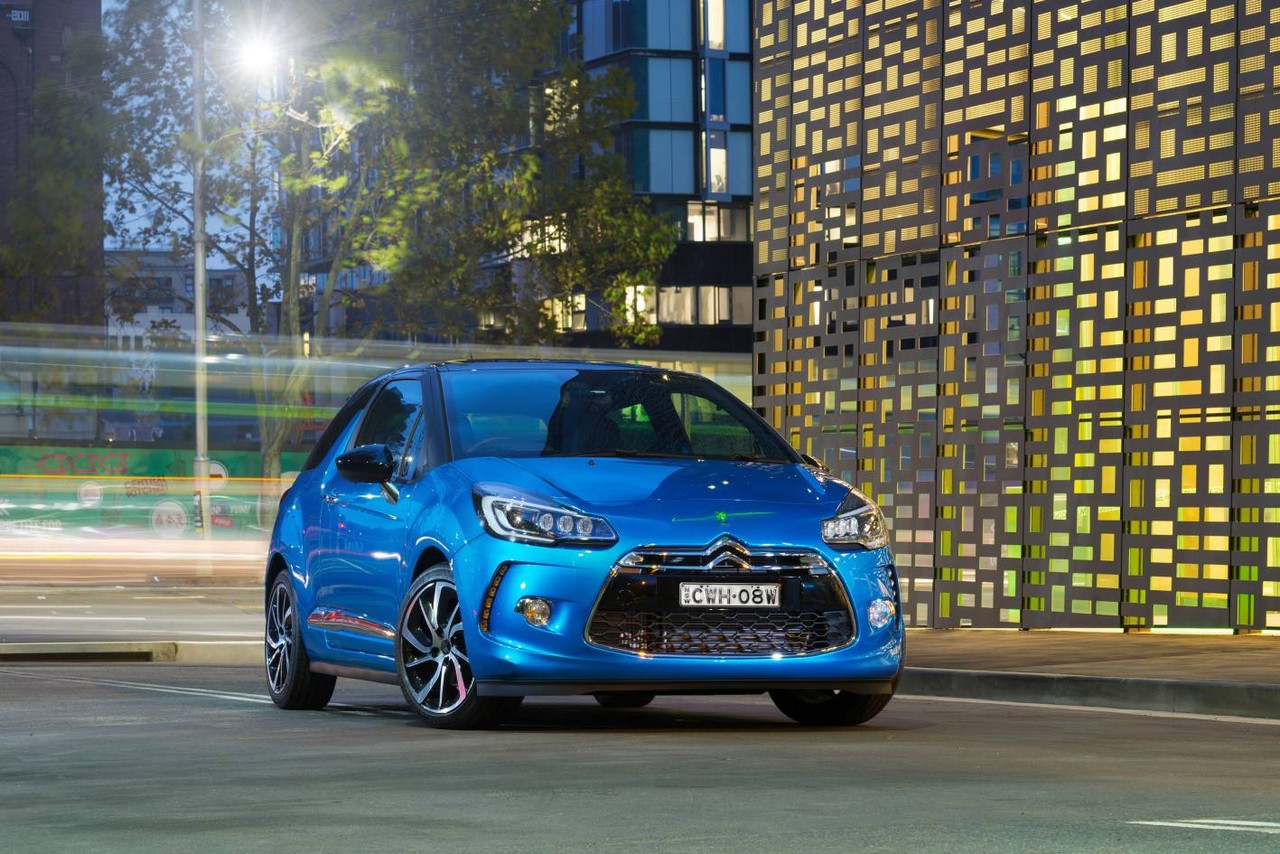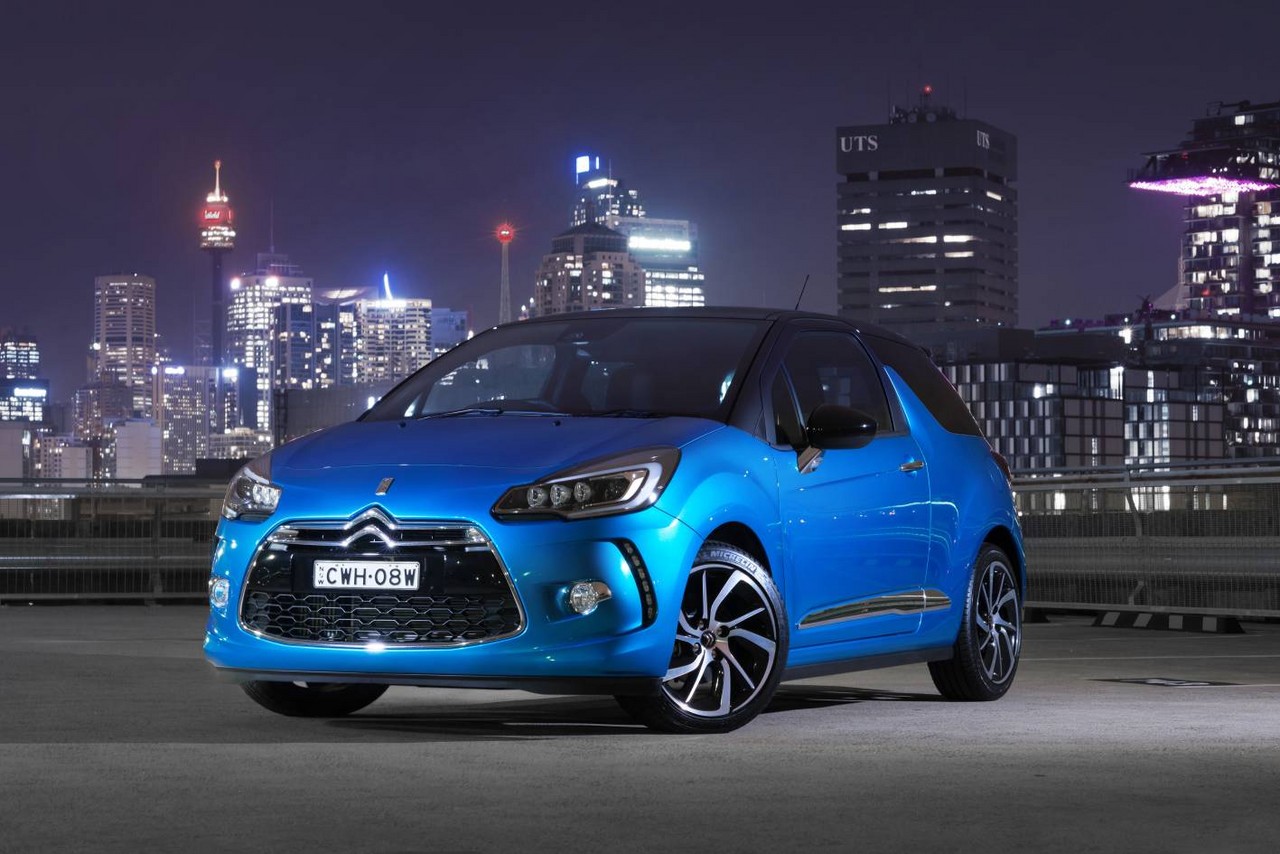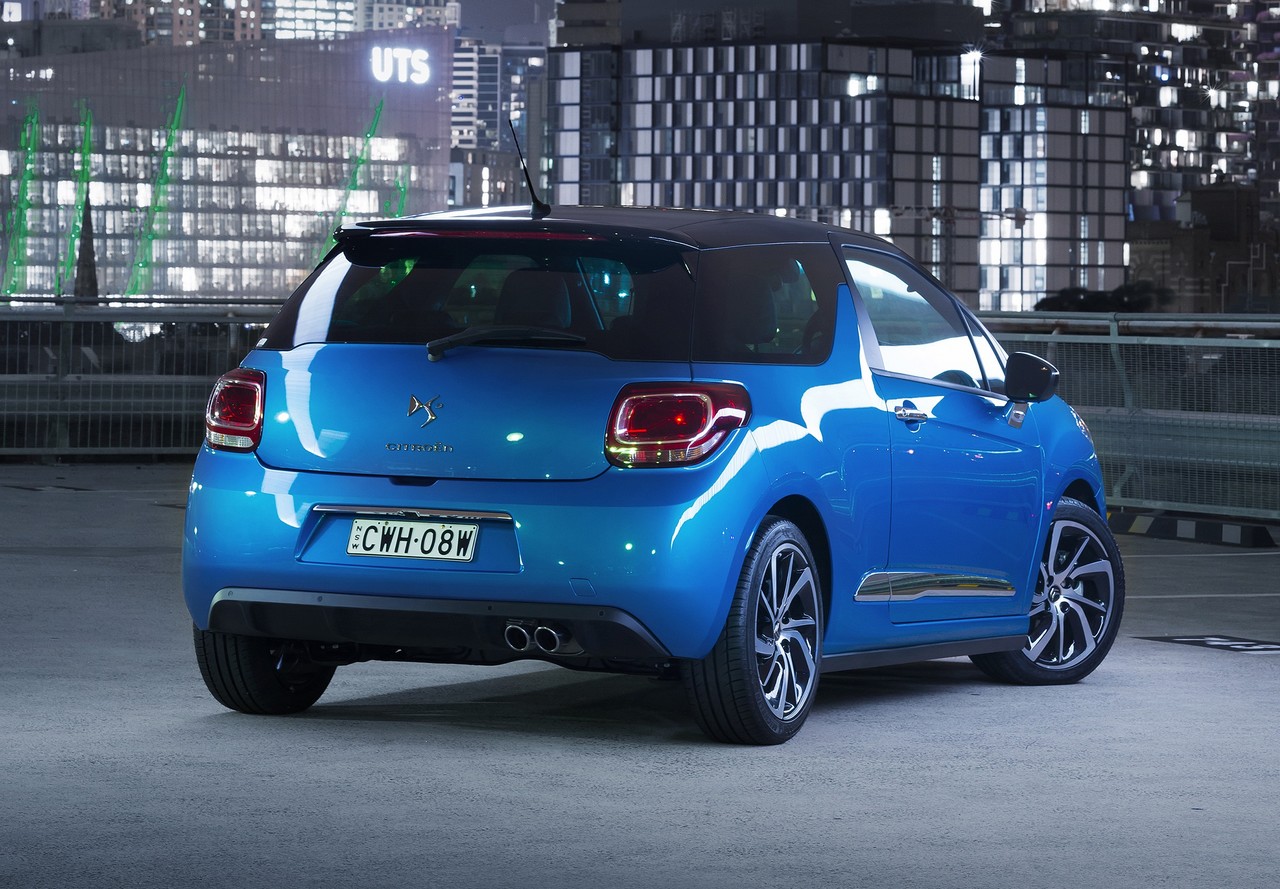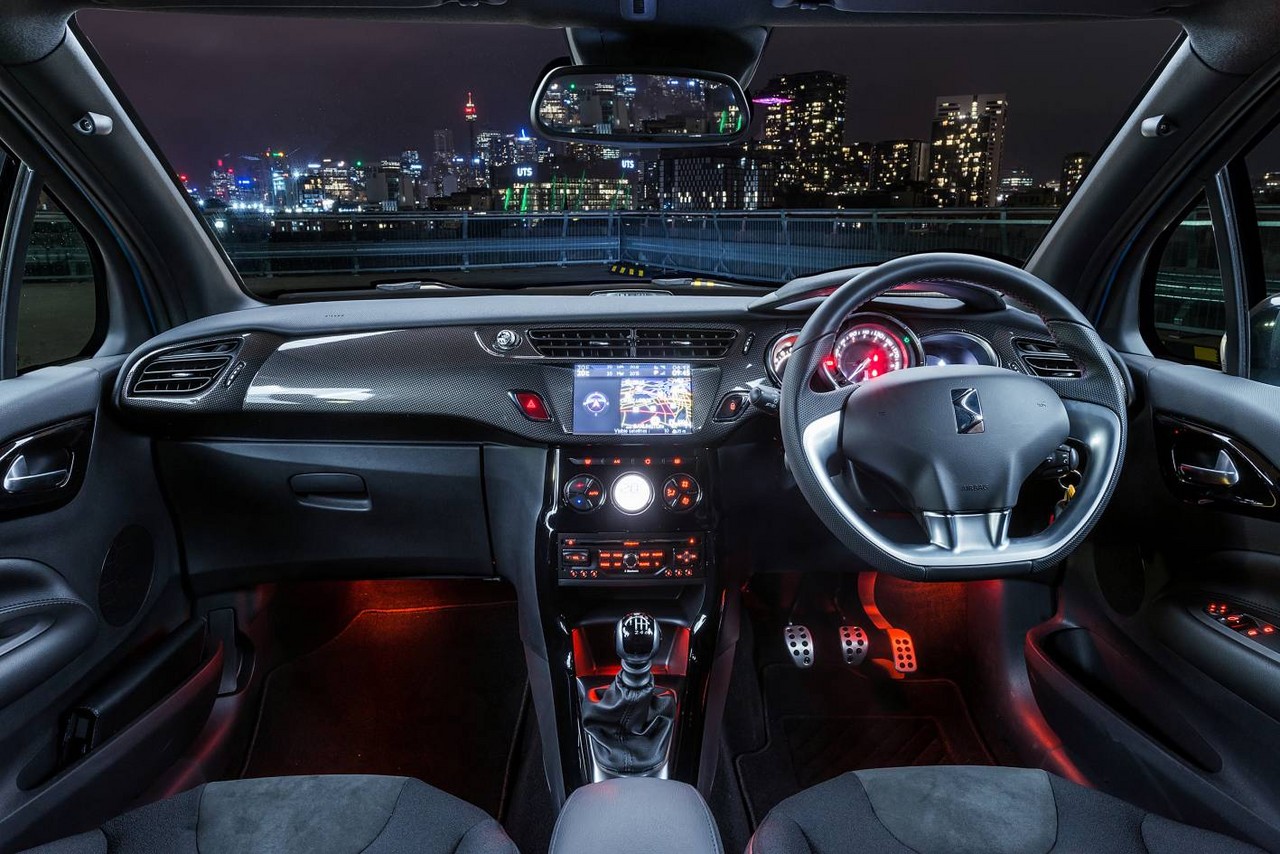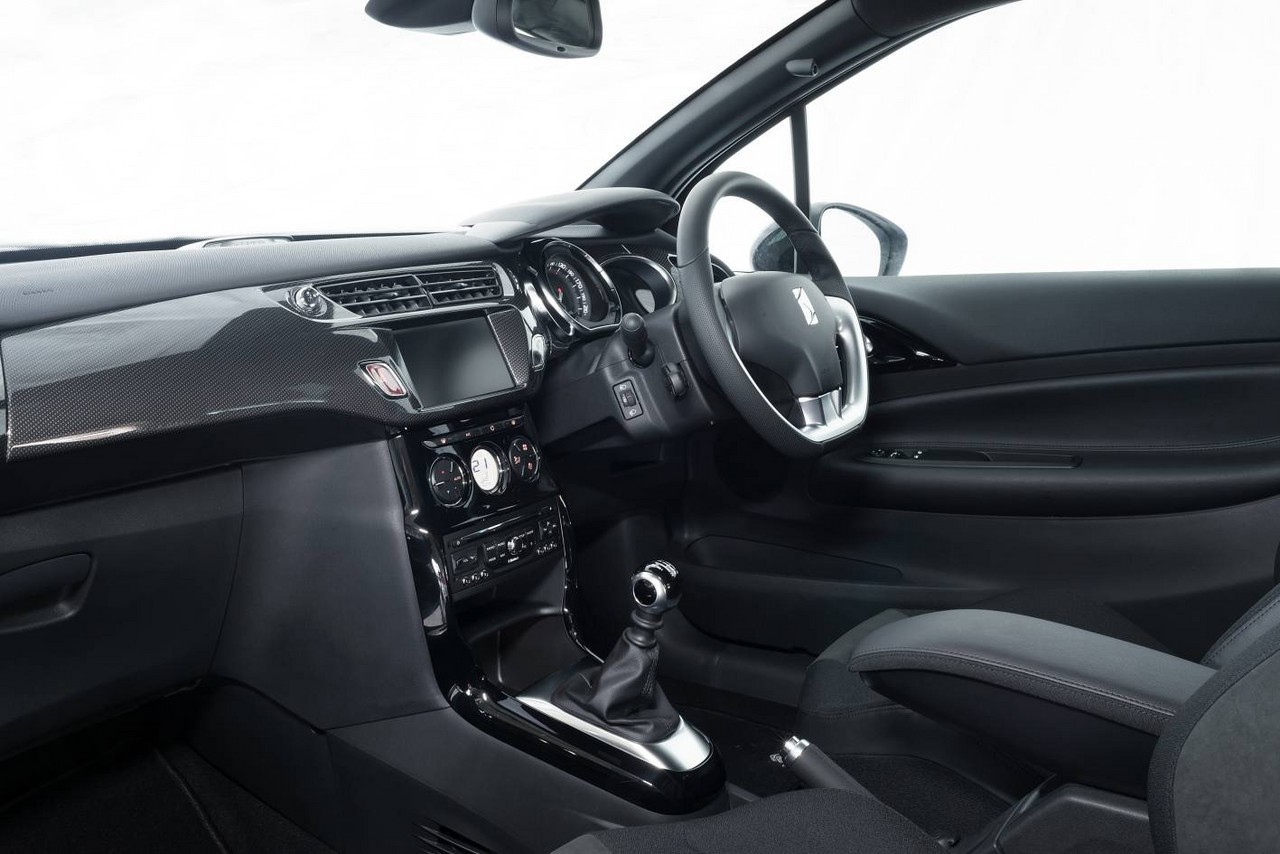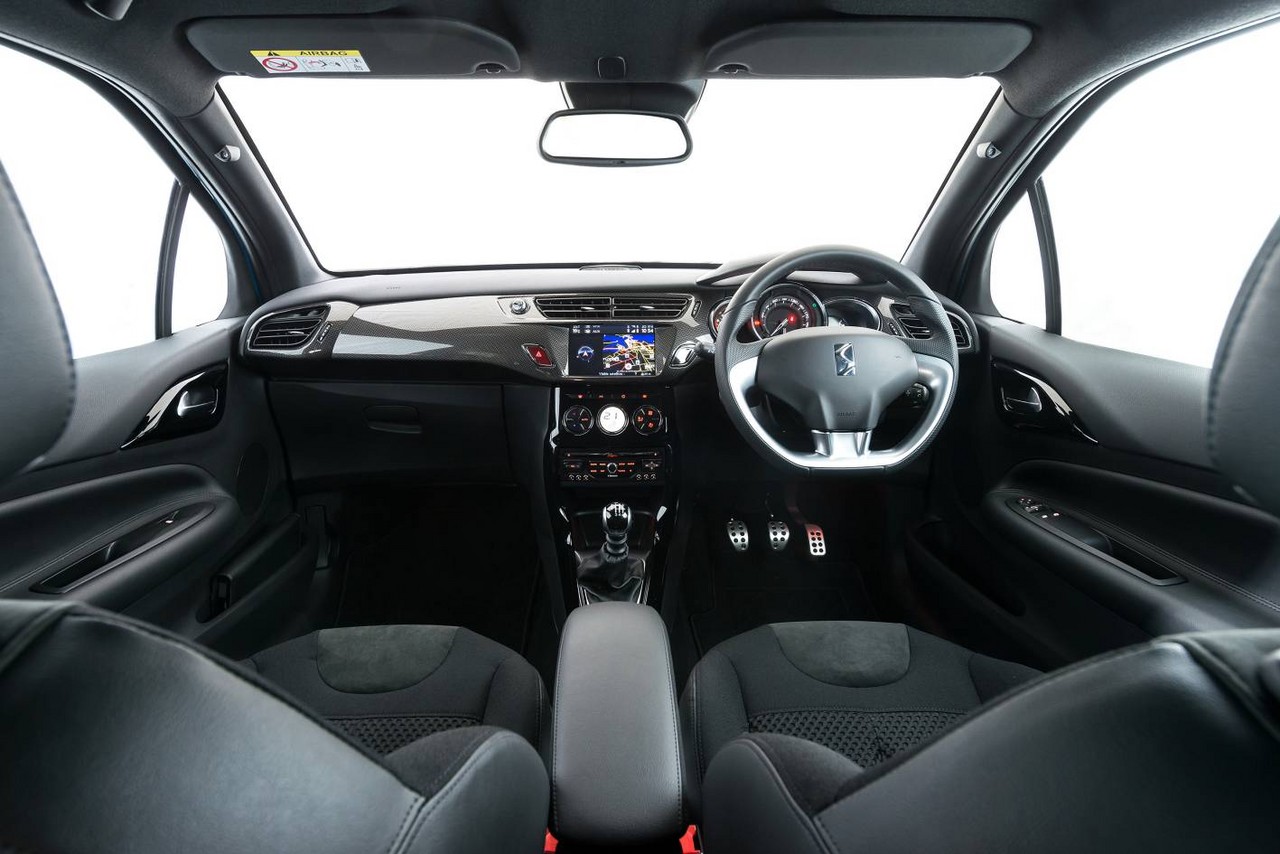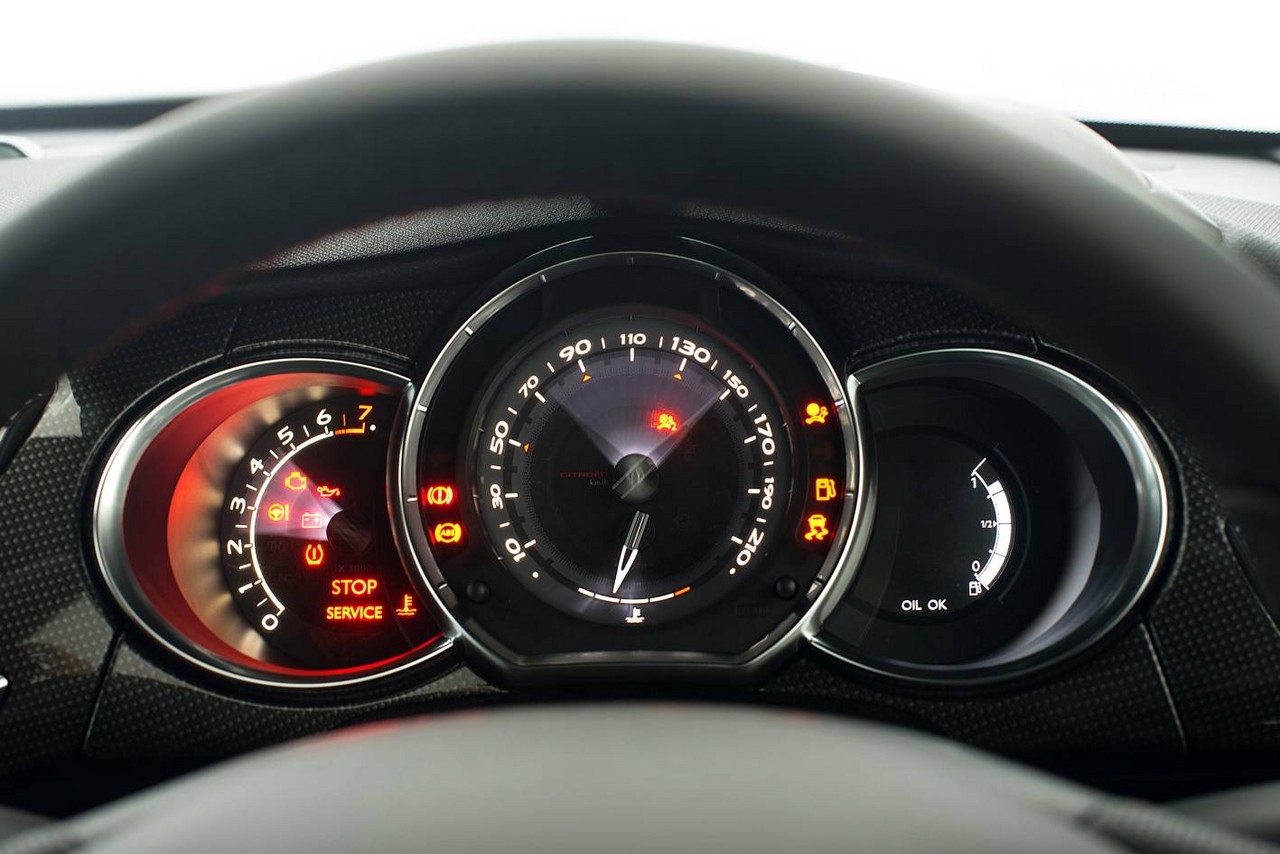
- Zesty turbocharged engine for DS3 DSport
- Impresside ride/handling balance
- Stylish interior
- Dynamics lack precision and enjoyment of Mini R56 Cooper
- Cramped rear seat
- Low-profile tyres compormise ride quality
Review: Citroën DS3 (2010-17)
Review: Citroën Phase I DS3 (2010-15)
Overview
Released in September 2010, the Citroën DS3 was a small, three-door hatchback. Manufactured in Poissy, France, the front-wheel drive DS3 range consisted of two DStyle and DSport variants. While the DS3 was initially available with 1.6-litre naturally aspirated and turbocharged petrol engines for the DStyle and DSport, respectively, a 1.4-litre engine was introduced for DStyle variants in early 2012. The full range is given in the table below.
| Variant | Engine | Years | Trans. | Peak power | Peak torque |
|---|---|---|---|---|---|
| DStyle | 1397 cc EP3C petrol I4 | 2012-15 | 5sp semi-auto | 70 kW at 6000 rpm | 135 Nm at 4000 rpm |
| 1598 cc EP6C petrol I4 | 2010-15 | 4sp auto | 88 kW at 6000 rpm | 160 Nm at 4250 rpm | |
| DSport | 1598 cc EP6DT turbo petrol I4 | 2010-15 | 6sp man. | 115 kW at 6000 rpm | 240 Nm at 1400-4000 rpm |
Dimensions
Compared to the related Citroën Mk.2 C3 , the DS3 was 7 mm longer (at 3948 mm), 13 mm narrower (1715 mm), 41 mm lower (1483 mm) and had a 13 mm longer wheelbase (2464 mm); the drag coefficient was 0.31 Cd. For the launch variants, kerb weights for the DS3 DStyle and DSport were 1075 kg and 1165 kg, respectively.
Inside, cargo capacity was 285 litres with the rear seats in position, though this increased to 980 litres when they were folded down.
Steering and suspension
The DS3 had electric power-assisted steering, MacPherson strut front suspension and a torsion beam rear axle.
Safety equipment
Standard safety equipment for the Citroën DS3 included dual front airbags, front side airbags, full length curtain airbags, ABS, electronic brake force distribution, brake assist, electronic stability control, traction control and front seatbelts with pretensioners and load limiters; the brake lights would also flash during emergency braking situation.
Euro NCAP testing
In Euro NCAP testing , the Citroën DS3 received a five star safety rating which included an 87 per cent adult occupant protection rating and 71 per cent child occupant protection rating. Under ANCAP’s methodology, this testomg resulted in a five star adult occupant protection rating with a score of 35.14 out of 37.
Features: DS3 DStyle and DSport
Standard features for the DS3 DStyle included 16-inch ‘Ashera diamond-tipped’ alloy wheels with 195/55 R16 tyres, six speaker sound system with CD player, MP3-compatibilty and auxiliary input, air conditioning, Mistral ‘Grand Rayados’ and ‘Omni Cloth’ with Zephyr stitching, front and rear fog lights, cruise control with speed limiter, cooled glovebox, 2/3-1/3 split and folding rear seat, a leather-wrapped steering wheel, remote central locking, power front windows and door mirrors, a height and reach adjustable steering wheel, height adjustable front seats, tinted glass with dark-tint rear windows, 12 volt power outlet, trip computer and immobiliser.
Beyond this, the DS3 DSport added 17-inch ‘Bellone’ alloy wheels with 205/45 R17 tyres, climate control air conditioning, Sirocco ‘Akinen’ Cloth trim and Mistral Alcantara, ambient lighting, aluminium drilled pedals and alarm. Visually, the DSport was distinguished by its rear spoiler, chrome grille and door mirrors.
February 2012 and February 2013 updates
From February 2012, the DStyle variant was fitted with climate control air conditioning while both variants featured Bluetooth connectivity and an auxiliary USB input.
From February 2013, the DSport variant was fitted with satellite navigation as standard.
DSport Limited Edition
In July 2012, a DSport Limited Edition model was released which was fitted with two-tone leather seats as standard.
Brochure
Related links
- Press Kit: Citroen DS3 (September 2010)
- Press Kit: Citroen DS3 – expanded range (February 2012)
- Specifications: Citroen DS3 (September 2013)
- Specifications: Citroën DS3 (April 2014)
Review: Citroën Phase II DS3 (2015-17)
Overview
Released in Australia in April 2015, the Citroën Phase II DS3 range initially consisted of DSport variants that were powered by a new 1.6-litre turbocharged petrol engine (the e-THP 160, detailed below). The Phase II DS3 range, however, is expected to feature DStyle variants when a new automatic transmission becomes available.
Visually, the Phase II DS3 DSport could be identified by its:
- Xenon-LED headlights which consisted of three independent LED modules and a xenon module, the latter used to create a wide, uniform beam of light; and,
- 17-inch ‘Aphrodite’ black alloy wheels.
e-THP 160 engine
Replacing the THP 155 engine, the e-THP had an aluminium alloy block and cylinder head, a twin-scroll turbocharger, double overhead camshafts, direct fuel injection (up to 200 bar), four valves per cylinder, variable valve timing and a compression ratio of 10.5:1.
Significantly, the e-THP 160 engine also had a ‘Stop-Start function’ that enabled it to shut down when the vehicle was stationary in traffic to reduce fuel consumption. Other energy reduction measures included a volume flow-controlled oil pump and on-demand water pump.
Requiring 95 RON premium unleaded petrol, fuel consumption for the DS3 Sport over the combined ADR 81/02 test cycle was 5.6 litres per 100 km.
| Variant | Engine | Years | Trans. | Peak power | Peak torque |
|---|---|---|---|---|---|
| DSport | 1598 cc EP6DT turbo petrol I4 | 2015-17 | 6sp man. | 121 kW at 6000 rpm | 240 Nm at 1400 rpm |
Safety equipment
Standard safety equipment for the DS3 was extended to include Citroën’s ‘Active City Brake’. Operating at speeds under 31 km/h, Active City Brake used a short-range laser sensor – mounted ahead of the rear-vision mirror to monitor obstacles up to 10 metres ahead of the vehicle – and provided autonomous braking if a collision was anticipated. Active City Brake had two modes:
- Crash Avoidance: for speeds up to 27 km/h; and,
- Crash Mitigation: for speeds from 28 km/h to 30 km/h
Features: DS3 DSport
Standard features for the Citroën DS3 DSport were extended to include LED and xenon headlights (‘DS LED Vision’), automatic headlights, rain-sensing wipers, a rear view camera, rear parking sensors, door mirrors with heating and fold functions, an electrochromatic rear view mirror and tyre pressure monitoring.
As per the February 2013 update, satellite navigation remained standard (an eMyWay system which had a seven-inch display).
Related links
- Citroën Automobiles Australia: Citroën DS3
- Specifications: Citroen Phase II DS3 (April 2015)
- Behind the Wheel: 2015 Citroën DS3 Review
- Wikipedia.org: Citroën DS3
